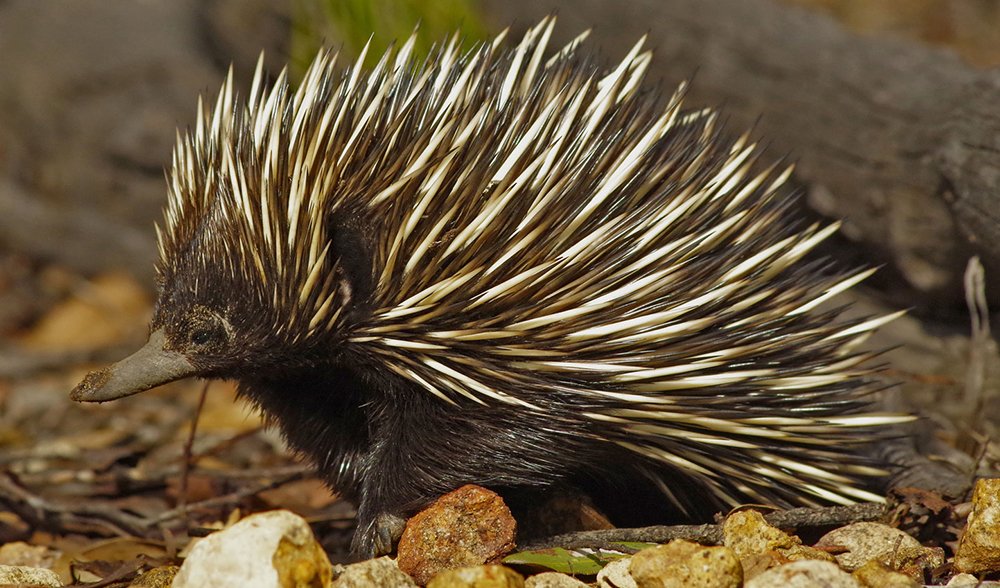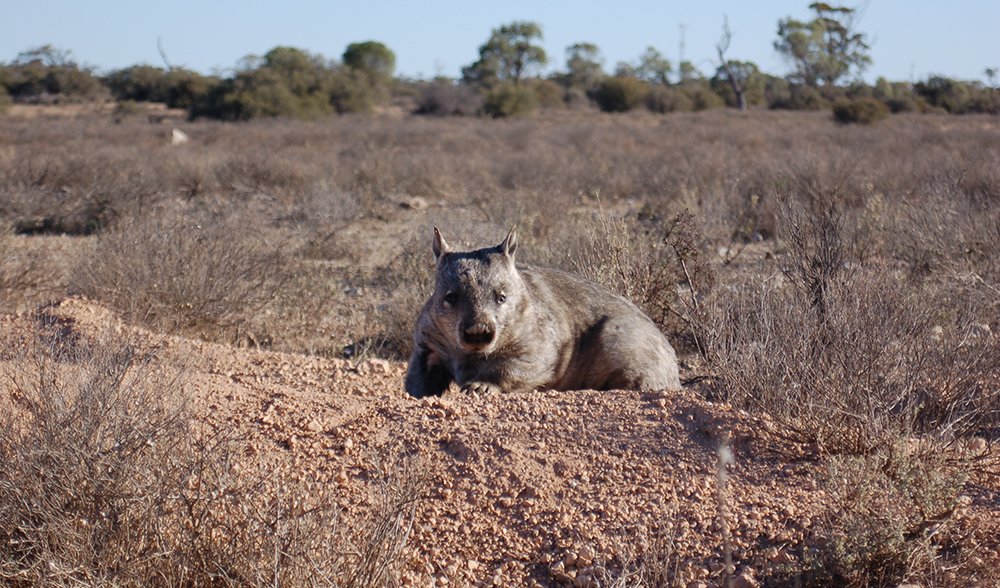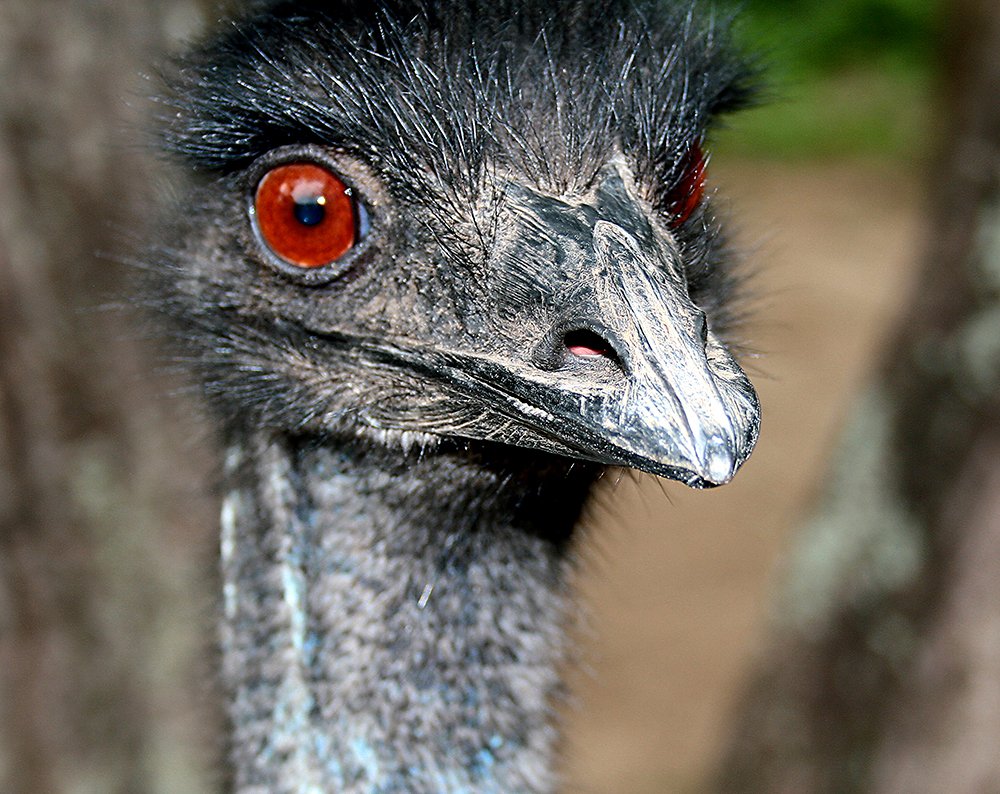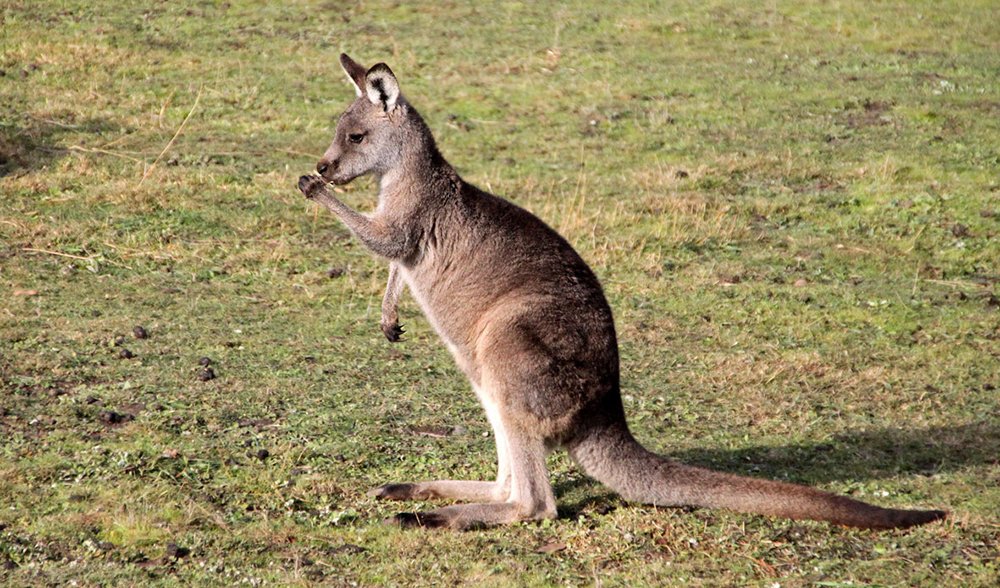Top Aussie animal science stories of 2016

1. Echidnas are essential to the health of Australia’s soils
October 2016

A single echidna can turn over 200m³ of soil every year. That means just 12 echidnas could move an Olympic-sized swimming pool of soil. (Image: Christine Cooper)
Australia’s very own Fantastic Beasts may not be as cuddly as a Niffler, but short beaked echidnas are magical in their own way. In the wild, a single echidna can turn over 200m³ of soil every year – the equivalent of two double decker buses according to a study published in October by researchers from Queensland and WA.
By attaching GPS trackers and accelerometers to the animals, the scientists learned that echidnas also move differently according to the temperature. When it’s cool, they waddle around all day at a stately pace, but when the temperature rockets, they’re only active for a couple of hours of day, when they sprint everywhere at a top speed of around 06.m s-1.
Burrowing animals play an essential role in the health of soils by aerating it and mixing in organic material.
Researcher Christofer Clement says, “They are probably one of the last really big bioturbators [soil mixers] left in Australia, which means that they are really important for the environment”.
2. Tasmanian devils are starting to develop resistance to their devastating infectious cancer
May 2016

Baby Tassie devil at Devil Ark in Barrington Tops, NSW – Australia’s largest conservation breeding program for Tasmanian devils on the mainland. (Image: Devil Ark)
This year at last brought some good news for the ongoing battle to save the Tasmanian devil from the terrible infectious cancer that’s been decimating them since the 1990s.
In May, researchers from Deakin University in Victoria published evidence that a small number of devils are able to fight off the disease to the point where the facial tumours disappear. And in August a team from Australia, the US and UK found evidence that some devils have evolved genes that resist the disease.
While this is great news, scientists say it’s still essential to develop management strategies to help the whole population.
Dr Beata Ujvari from Deakin University says a process known as “active immunotherapy” could be the magic bullet that saves the Tassie devils from extinction. “Anti-tumour vaccines that enhance the production of these natural antibodies, or direct treatment of the cancer with natural antibodies, could become a solution to help halt this disease,” she said.
Professor Hamish McCallum of Griffith University, Queensland, suggested the fight to save the devil could help scientists fight other forms of cancer. “This is a bizarre cancer in a unique Australian marsupial, but the disease and the way that the Tasmanian devils respond can provide new general insights into cancer biology.”
3. The secrets of wombat warrens revealed using radar technology
February 2016

Southern hairy-nosed wombat on its burrow in the Murraylands. (Image: David Taggart/University of Adelaide)
In February, PhD student Michael Swinbourne from the University of Adelaide became the first person ever to use ground-penetrating radar to map the inner workings of southern hairy-nosed wombat warrens – even under thick layers of hard limestone.
At the moment, there is no easy method of estimating the size of a wombat burrow or the population within. “A major problem we are grappling with is understanding just how many wombats there are and whether their numbers are increasing or decreasing,” Michael said. “The aim of this project was to map the extent of wombat warrens in different ground conditions; to gain a better understanding of the relationship between how they look on the outside and what goes on underneath.”
The findings should help decision-makers meet the broader challenge of balancing the need to conserve vulnerable wombat populations with the needs of farmers, who consider wombats a pest because their burrowing can damage farmland, crops and equipment.
4. Apex predators are helping sustain biodiversity in our ecosystems
February 2016

Dingoes play a vital ecosystem role, including helping control feral animal numbers. (Image: Andrew Gregory/Australian Geographic)
Apex predators such as sharks, crocodiles and dingoes play an important role in a healthy ecosystem, but are often among the first to be driven to extinction by humans. This year, we’ve learned a bit more about one of Australia’s last-remaining apex predators – the dingo.
In February, researchers from the University of NSW discovered that dingoes seem to have a protective effect on the endangered dusky hopping mouse, providing them with a safer environment by reducing the number of feral cats.
Professor Mike Letnic, who conducted the study, described apex predators as “an uncomfortable ally” in an interview with news.com.au. “Just like the great white shark, the dingo has positives for the environment. We just need to learn how to balance that.”
In March, a UNSW study revealed the dingo is resistant to one of the major threats to its survival as a distinct species – crossbreeding with domestic dogs. The study may have implications for understanding how animals respond to future ecological challenges.
Dingoes also play a role in helping us understand prehistoric human beings, because the relationship between humans and dog species helps us track the movements of people and ideas across the world.
New research released in June suggests that hunter-gatherers from Indonesia were responsible for introducing the dingoes around 4000 years ago.
5. Bandicoots are only scared of dogs because they look like dingoes
September 2016

Southern brown bandicoot. (Image: John O’Neill (jjron)/Wikimedia)
A study published in September by the University of Tasmania – with a little help from local citizen scientists – has helped scientists understand more about why introduced predators such as dogs, cats and foxes cause such rapid declines in native species.
It’s clear that part of the problem is that native species don’t view introduced predators as a threat and therefore don’t avoid them. But it was thought that this “naiveté” doesn’t last long – scientists often pointed out that bandicoots in suburban Sydney have learned to avoid backyards with domestic dogs.
But bandicoots don’t avoid backyards with domestic cats – even though cats, like domestic dogs, were introduced around 200 years ago. This led to the hypothesis that Sydney bandicoots avoid domestic dogs because they had 4000 years to learn to avoid the dog’s close cousin, the dingo.
The researchers coordinated 548 dog or cat owners in Tasmania – which has no dingoes – to report bandicoot sightings and scats in their backyards.
“My collaborators and I found that – unlike Australian mainland bandicoots – bandicoots from the island state of Tasmania are naïve to domestic dogs,” said researcher Anker Frank. “This study supports our hypothesis that naiveté towards unfamiliar predators may eventually be overcome, but that in Tasmania 200 years of exposure have been an insufficient time for bandicoots to recognize cats as well as dogs as a threat.”
6. Crocodile conservation may lead to new human fertility treatments
May 2016

New research in 2016 uncovered new insights into the workings of both crocodile eyes, and sperm.
Researchers this year are gaining insight into how Australian fresh and saltwater crocodiles see the world, and some of their research may even help treat human fertility issues.
In May, scientists from the University of Western Australia and Macquarie University, NSW, discovered that the eyes of crocodiles are more sophisticated than previously thought.
An area of the crocodile’s eye that provides a high-resolution view of the world is, unusually, stretched across the back of the eye in line with the horizon – allowing crocs to see fine details on riverbanks without moving their head. This heightened vision is the reason crocodiles are experts at lying in wait – and striking.
The researchers also discovered that freshwater and saltwater crocodiles have adapted to see colour according to the differing light conditions in fresh and salt water. This suggests that they use their vision underwater more than previously thought.
In the same month, University of Newcastle, NSW, researchers published a study showing that crocodile sperm behaves more like human sperm than previously thought.
Because crocodile sperm is simpler, researchers were able to gain important insights into how sperm swim and ultimately fertilise an egg. They identified the key proteins that enable sperm to move and identify eggs, and discovered that bicarbonate ions in the female reproductive tract turn these proteins on and off. While the research is aimed at improving commercial crocodile breeding and conservation work, these proteins can also be found in human sperm and could provide targets for infertility research in humans.
7. You can teach an old koala new tricks
July 2016

Promising new research showed that it is possible to design an urban environment where koalas can learn to coexist safely with people. (Image: Adolf/Wikimedia)
Currently, Australian highways have special structures designed to help Australia’s vulnerable koala population move safely across roads and highways – but until now it’s been hard to prove that koalas actually use them. In July, a study released by Griffith University researchers showed that our sleepy koalas are cleverer than previously thought.
The world-first study involved monitoring retrofitted ledges, tunnels and other eco-structures over a 30-month period, using camera traps and wireless ID tags to identify individual koalas that used the crossing. Traffic volumes for the region studied are predicted to increase by 19 per cent between 2006 and 2031.
In 30 months, the researchers recorded 130 verified crossings.
Researcher Darryl Jones said they expected the koalas to take a while to get used to the structures. “To our great surprise they were using them three weeks into it,” he said.
The study should help build a powerful case for continuing to keep installing eco-structures to support threatened koala populations.
8. Emus see the world in ultraviolet colours
July 2016

Image: Ron Robinson/Wikimedia
Australian scientists have challenged a widely held notion that birds evolved the ability to see ultraviolet light in recent times. A study published in July by Macquarie University and University of Western Australia has found that Australia’s very own ‘dinosaur’, the emu, also sees the world in ultraviolet colours.
Emus belong to a group of primitive flightless birds that diverged around 120 million years ago from the family tree of modern birds. Given that some of today’s more advanced bird species have lost the ability to see UV light, the study suggests the ability to see ultraviolet light was present in the early bird species that the emu represents today. This implies that the rich visual world that most birds live in is not a recent evolution – it’s something the more advanced species may be losing.
According to the paper, the ability to see UV light helps emus find the fruit, seeds, insects, flowers and foliage they feed on.
9. Platypus reproductive cells behave more like those of birds than other mammals
December 2015

(Image: Flickr/Darren Puttock, CC BY-NC-ND)
Many 18th century British scientists thought the first specimens of our web-footed, egg-laying, duckbilled icon were a hoax, assembled from bird and otter parts.
But the platypus has turned out to have more in common with birds than even the most sceptical British scientists suspected. A University of Adelaide study published in December 2015 has found platypus sex chromosomes have evolved to behave more like those of birds than other mammals.
In mammals, the chromosomes that determine gender are usually “switched off” during the division of the cells that create eggs and sperm. But the new research shows that the sex chromosomes of the platypus don’t switch off, instead using a complicated process of division usually seen in birds.
This may mean that monotremes (platypus and echidna) diverged from other mammals before this major change in sex chromosome organisation occurred – which could support a theory that mammals went through a transitional, avian-like period of evolution.
10. Ugly animals aren’t being studied enough
March 2016

The ‘ugly’ ghost bat. The researchers considered 83 bat species for the study, making up 25% of the total species investigated, but less than 5% of the total number of published studies. (Image: Mark Cowan)
It’s time science gave ugly Aussie animals a bit more love, a Murdoch and Curtin university paper declared in March this year.
The authors reviewed existing research on 331 Australian mammals and found that scientists have neglected “ugly” animals such as native bats and rodents, even though the uglies represent nearly half the 331 species the study targeted.
“We know so little about the biology of many of these species. For many, we have catalogued their existence through genetics or taxonomic studies, but when it comes to understanding what they eat, their habitat needs, or how we could improve their chances of survival, we are very much still in the dark,” said Dr. Patricia Fleming, lead author of the paper.
“These smaller animals make up an important part of functioning ecosystems, a role that needs greater recognition through funding and research effort.”
11. Most kangaroos are left-handed
June 2015

It turns out roos are a bunch of lefties. (Image: Andrej Giljov/National Geographic Society)
Okay, so not quite this year, but worth noting is a 2015 study by Russian and Australian scientists that found kangaroos prefer to use one hand (or paw) over the other when performing tasks such as bending branches, picking leaves and grooming.
While most humans are right-handed, most wild kangaroos are lefties. More study into this tendency could help yield important insights into neuropsychiatric conditions such as schizophrenia and autism, which have links to handedness.
Until now, it was believed that “true” handedness was a feature unique to primates.
“According to a special-assessment scale of handedness adopted for primates, kangaroos pulled down the highest grades,” says Yegor Malashichev of Saint Petersburg State University. “We observed a remarkable consistency in responses across bipedal species in that they all prefer to use the left, not the right, hand.”
Finding that kangaroos show a natural preference for their left hand was unexpected, because marsupials don’t have the neural circuit that bridges the left and right hemispheres of the brain in primates. The findings should encourage more study into the marsupial brain.
READ MORE:
- Why do wombats do cubic shaped poos?
- Urbanisation of crows a “significant moment”
- Wombats suffering and dying from treatable disease
- New koala genome bank aims to end chlamydia epidemic




